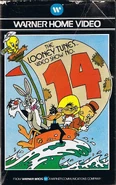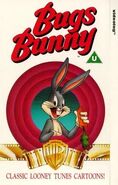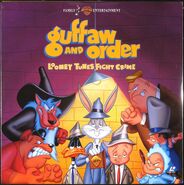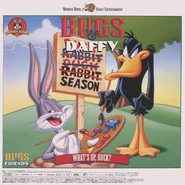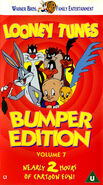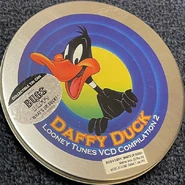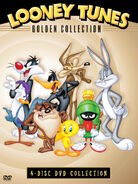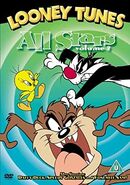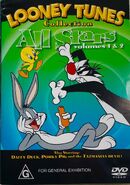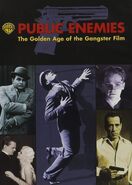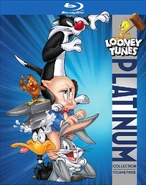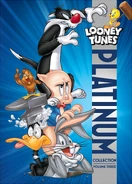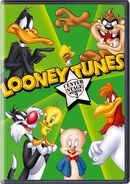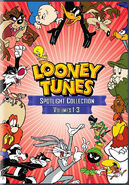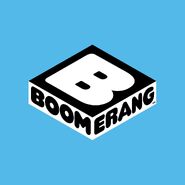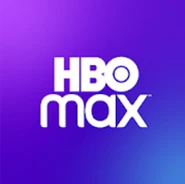Bugs and Thugs is a 1954 Looney Tunes short directed by I. Freleng.
Plot[]
Bugs emerges from his hole in a city park, reading the newspaper on his way to the nearest bank for a withdrawal from his personal depository of carrots. He reads that "Rabbit Season Opens Today" and comments on his pleasure of living in a “more secure” urban environment.
Meanwhile, unbeknownst to Bugs, Mugsy drives up to the bank, which Rocky invades and robs of an undisclosed sum. When Bugs accidentally walks into Rocky and Mugsy's getaway car – mistaking it for a taxi – and also mistaking the giant bags of cash for laundry, Rocky asks Bugs "How much do ya know?" Unaware that he is in the same vehicle as a robber who is asking him what he knows about the hold-up, Bugs responds "Who, me? Oh, I know a lots of things. Two and two is four, Carson City is the capital of Nevada, uh, George Washington was the first President." Rocky responds, "This guy knows too much, Mugsy. We'll take him for a ride." An irritated Rocky keeps telling Bugs to be quiet or he will get shot. Bugs then asks Mugsy to stop at a nice, clean gas station. Bugs gets out of the car and receives a nickel from the easily fooled Mugsy so he can use the pay telephone. Bugs pushes in the nickel and calls the police to report Rocky and Mugsy, but Mugsy grabs Bugs out of the telephone booth and they escape. The gag is Bugs still holding on to the telephone – and a cartoon policeman is pulled out of the telephone wire onto the road ("Operator – we've been disconnected!").
Soon, Rocky and Mugsy's car stops in front of a railroad track, with the signals announcing an oncoming train. Rocky tells Bugs to let them know when it's clear. Bugs tells them to go and the oncoming train proceeds to smash into the car with Rocky and Mugsy still inside.
Bugs is soon forced to fix the car at gunpoint by Rocky. Bugs repairs everything except the tire and says that they're stuck. Rocky tells Bugs that he is the only one stuck and forces Bugs at gunpoint to run alongside the car while holding the right front axle. Rocky tells Mugsy to take the "scenic route". Soon, they arrive at their cliff house, and then Rocky tells Mugsy to let Bugs have it. Mugsy is about to kill Bugs but then Bugs makes Mugsy think the idea is to let Bugs have the gun. Bugs then shoots Mugsy, who stumbles into the room where Rocky is and says "I let him have it boss, just like you said," and faints landing on top of Rocky, who punches him to get him off.
Soon, Rocky decides to really let Bugs have "it," but Bugs yells out a fake alarm scream that the police have arrived and surrounded the house. Bugs hides Rocky and Mugsy in the stove when they fall for Bugs' fake alarm. Bugs pretends to be a policeman and be himself trying to hide Rocky and Mugsy. Bugs turns on the heat of the stove and throws a "lighted" match in the oven. Then, the real policemen come and, in an exact match of Bugs' previous ruse, one of them asks where Rocky and Mugsy are. When Bugs is about to throw another "lighted" match into the oven, Rocky and Mugsy quickly run out of the stove and piteously beg the policeman to arrest them, unwilling to deal with Bugs again.
The next day, Bugs becomes a criminal-catching detective talking on the phone, styling himself as "Bugs Bunny, Private Eyeball – Thugs Thwarted, Arsonists Arrested, Bandits Booked, Forgers Found, Counterfeiters Caught, and Chiselers Chiseled."
Availability[]
The Looney Tunes Video Show, Volume 14
Bugs Bunny (1990)
Guffaw and Order: Looney Tunes Fight Crime
Bugs and Daffy: What's Up, Duck? (1997 dubbed version) (only in PAL regions)
Special Bumper Collection (Vol. 7)
Looney Tunes VCD Compilation 2
Looney Tunes Golden Collection: Volume 1, Disc Four (restored with DVNR)
Looney Tunes Spotlight Collection: Volume 1, Disc 2 (restored with DVNR)
Bugs Bunny (2003)
Looney Tunes Collection All Stars Volume 2
Looney Tunes Collection All Stars Volumes 1 & 2, Disc 2
Looney Tunes Platinum Collection: Volume 3, Disc One (restored without DVNR)
Looney Tunes Platinum Collection: Volume 3, Disc One (restored without DVNR)
Looney Tunes Center Stage Volume 2
Looney Tunes Spotlight Collection Volumes 1-3 Repack
Streaming[]
Notes[]
- This is the debut of Rocky's partner, Mugsy, who would later appear in another short, "Napoleon Bunny-Part" (1956), and would then be paired with Rocky again in two more shorts: "Bugsy and Mugsy" (1957) and "The Unmentionables" (1963).
- This is the first short where Milt Franklyn is the sole composer. For the next four years until Carl W. Stalling's retirement, Franklyn and Stalling would interchangeably or collaboratively compose the cartoons up to "To Itch His Own".
- This cartoon marks the first appearance of the 1954-1964 Bugs Bunny head in the opening theme, which is a much smaller, less detailed look than the previous design that was used on the bigger WB shields.

